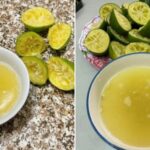In a Facebook post, Dr. Mark Hyman, an alumnus of the University of Ottawa, revealed that even a single cup of tea brewed from a regular tea bag can introduce trillions of microplastics into your body. Microplastics are tiny plastic particles smaller than 5mm in diameter, commonly found in food, beverages, and the air we breathe.
“A recent study showed that a single plastic tea bag can release up to 11.6 billion microplastics into a single cup of hot water,” Dr. Hyman quoted from the scientific journal, ACS Publications.
The Surprising Source of Microplastics: Tea Bags
In a study published in the journal Chemosphere, scientists analyzed three popular tea bag materials – nylon, polypropylene, and an unspecified material commonly sold in the market. They brewed each type of tea bag in 95°C water under laboratory conditions.
The results were concerning: polypropylene tea bags released the most microplastics, with approximately 1.2 trillion particles per milliliter of water and an average size of 136.7 nanometers. Nylon tea bags released around 8.18 million particles/mL, with an average size of 138.4 nanometers. All three types of tea bags released alarming amounts of microplastics when steeped in hot water.
Scientists warn that while the health effects of microplastics are still being studied, these particles can infiltrate cells, alter their function, and potentially cause serious harm to vital organs, especially in children and adolescents.

Microplastics and Their Potential Impact on Reproductive Health and Cancer
Recent studies suggest a link between microplastics and early cancer development, as they can stimulate healthy cells to transform into cancerous ones. Additionally, Chinese scientists have detected microplastics in male sperm, originating from water pipes. This exposure reduces sperm motility, impairing fertility and potentially contributing to the global decline in birth rates.
Tea: A Double-Edged Beverage When Not Brewed Properly
Dr. Hyman emphasizes that tea is an excellent source of antioxidants and offers benefits for cardiovascular health and the immune system. However, he cautions consumers about the material of tea bags. “If you’re a tea lover, opt for organic loose-leaf tea and brew it using glass or stainless steel infusers to minimize your microplastic intake,” he advises.
For those who prioritize convenience and can’t forgo tea bags, the doctor recommends choosing bags that are BPA, phthalate, polypropylene, and epichlorohydrin-free – all harmful compounds found in plastic. Bags made from plant fibers, organic cotton, or hemp are safer alternatives.
“Just like with food, the quality of your tea and its packaging matter for your health,” Dr. Hyman stresses.
The British Love Affair with Tea: A Hard Habit to Break
A survey by the tea company PG Tips, involving 2,000 British participants, revealed that each morning, the nation consumes approximately 53 million cups of tea, totaling 2.682 million gallons – enough to fill four Olympic-sized swimming pools. Over half of the respondents (59%) shared that they couldn’t start their day without tea.
The survey also found that 12% drink tea while still in bed, 10% consume three or more cups in the morning, and one in ten would even skip brushing their teeth to ensure they get their morning tea fix. Moreover, 64% believe tea makes them more productive, and 78% feel more alert and energetic after their morning cuppa.
Don’t Give Up Tea – Just Brew It Right
Tea is a cultural staple and a beloved morning ritual for millions worldwide. However, with the newfound knowledge about microplastics in tea bags, experts urge consumers to be more vigilant about their tea brewing habits. Enjoy your tea, but do so wisely to safeguard your long-term health.
Shudder: This Coffee Habit Makes You Swallow 1000+ Microplastic Particles Each Time
Coffee is a beloved beverage for many, but did you know that a certain style of coffee consumption can result in ingesting over 1,000 microplastic particles in a single sitting? Intrigued and concerned, we delve into this issue to uncover the specific method of coffee consumption and provide essential insights on how to steer clear of these microscopic intruders.



































